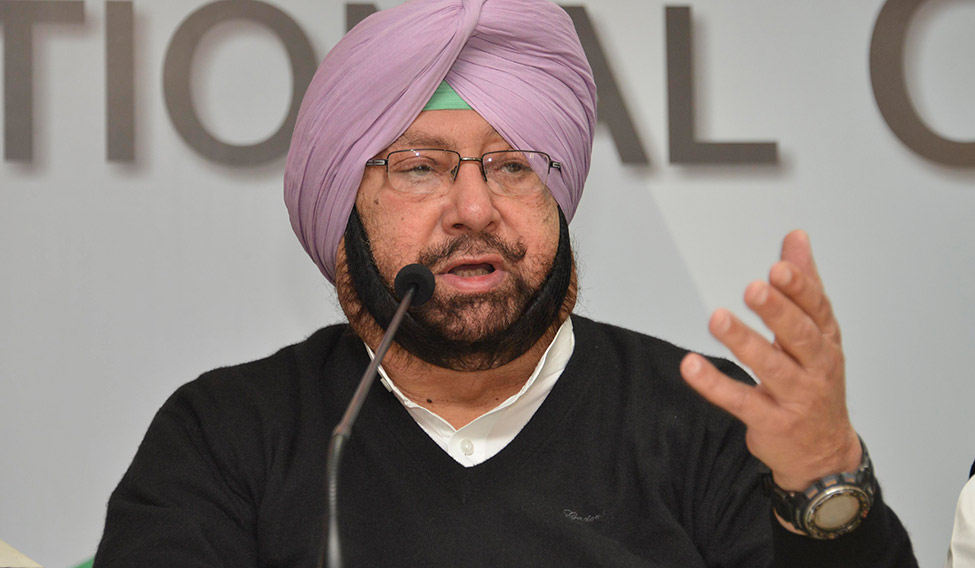Punjab is one of the few states that resisted the Modi tsunami and elected Congress candidates in 8 of 13 constituencies. Chief Minister Captain Amarinder Singh was hoping for more. He has gone on record that the Congress did not win Bhatinda, where Harsimrat Kaur Badal, the Union minister for food processing industries in the outgoing cabinet, won, because of his colleague Navjot Singh Sidhu, who had raised questions on his own government on the contentious sacrilege issue.
It is not just the eight seats the Congress won that should be reason for Singh to rejoice. Assembly segment-wise analysis shows the party had a lead in 69 of the 117 assembly constituencies. In the legislative elections of February 2017, the Congress had won 77 seats. While this may indicate a drop, what can be heartening for him is the fact that the traditional rival, the Shiromani Akali Dal, had the lead only in 24 constituencies. This, however, is an improvement for the Sukhbir Badal-led party that has only 15 MLAs in the current Vidhan Sabha.
ALSO READ: Amarinder thanks voters partymen for Congress's good show
The victories of Harsimrat from Bhatinda and Sukhbir from Ferozepur are credited to PM Modi. The BJP won in all the three constituencies where the party contested. The Modi wave also saw film star Sunny Deol win from Gurdaspur, defeating PPCC president Sunil Jhakar, who had won the seat in a by-election following the death of actor-politician Vinod Khanna.
How did Singh manage what can well be a magical feat? According to Dr Pramod Kumar, director of the Chandigarh-based think tank Institute for Communication and Development, one major reason was that “the chief minister stood his ground and refused to toe the Congress line of Modi-bashing”. And another big reason he said is the way Singh “appropriated and extended Modi's narrative on national security and identity politics that led to the saffron surge in the country”.
also read
- Panel pulls up Centre for failing to give EVM-VVPAT tally data for 2019 Lok Sabha polls
- Amarinder Singh joins BJP, merges Punjab Lok Congress with party
- Captain Amarinder Singh to join BJP soon?
- Need stable, strong govt at Centre in 2024: Amarinder
- Pakistan wanted Sidhu reinstated as Punjab minister, claims Amarinder Singh
While Modi has been using Balakot and building the story of safeguarding India's national security, and meeting terrorism head on, the chief minister in Punjab, took it a step further, asserting that India should kill two Pakistanis for every Indian killed, and that India cannot be held to ransom. Stating this on his own, in the state where Pakistan is a stone's throw away, divided only by a manmade fence, won him support. But uniquely enough, Punjabis who are neighbours of Pakistanis speaking the same tongue, cannot hate them. Singh's consistent references to the building of the Kartarpur Corridor to promote people-to-people contact, also got him votes. So, the chief minister of Punjab and one of the tall leaders of Congress in the country, was seen and heard going beyond petty abuses, unlike the lowly political discourse between Modi and Congress president Rahul Gandhi.
The SAD tried to corner him on the issue of religion and the desecration of religious books that had happened during the Badal rule, saying no action had been taken. But it fell flat because the chief minister has been accusing the ISI of using religion as a tool to destabilise Punjab, by desecrating religious places and holy books. The chief minister had also kept his attack on the Badals going by periodic references to the way the SGPC was used, to let off the Dera Sacha Sauda chief Gurmeet Ram Rahim, leading to many traditional Akalis turning against them.
The chief minister also focused on the performance of his government, in spite of having a fair amount of unfinished agenda. The fact that the SAD joined the BJP's election manifesto ensured there was no flogging the dead horse—raising issues of river waters and territorial disputes.
BJP leaders in Delhi raised the issue of anti-Sikh riots of 1984, but that did not resonate with the people of Punjab.
In the combative mode that Singh remained through the campaign, Badals remained confined to their constituencies. The presence of a declining and degenerating Aam Aadmi Party in the contest all over the state brought down the votes of both, the Congress and the SAD and the BJP, but almost negligibly.
But what helped the Congress the most is the free hand that Singh got to lead the campaign in the state on his own terms. Such leadership in all the states can possibly help rejuvenate the Congress, for they represent the state's interests fully, without it affecting their responsibilities towards India as a country. And in keeping with that sentiment, Singh reiterated his commitment to making Punjab the number 1 state again—a rank it lost long ago.



